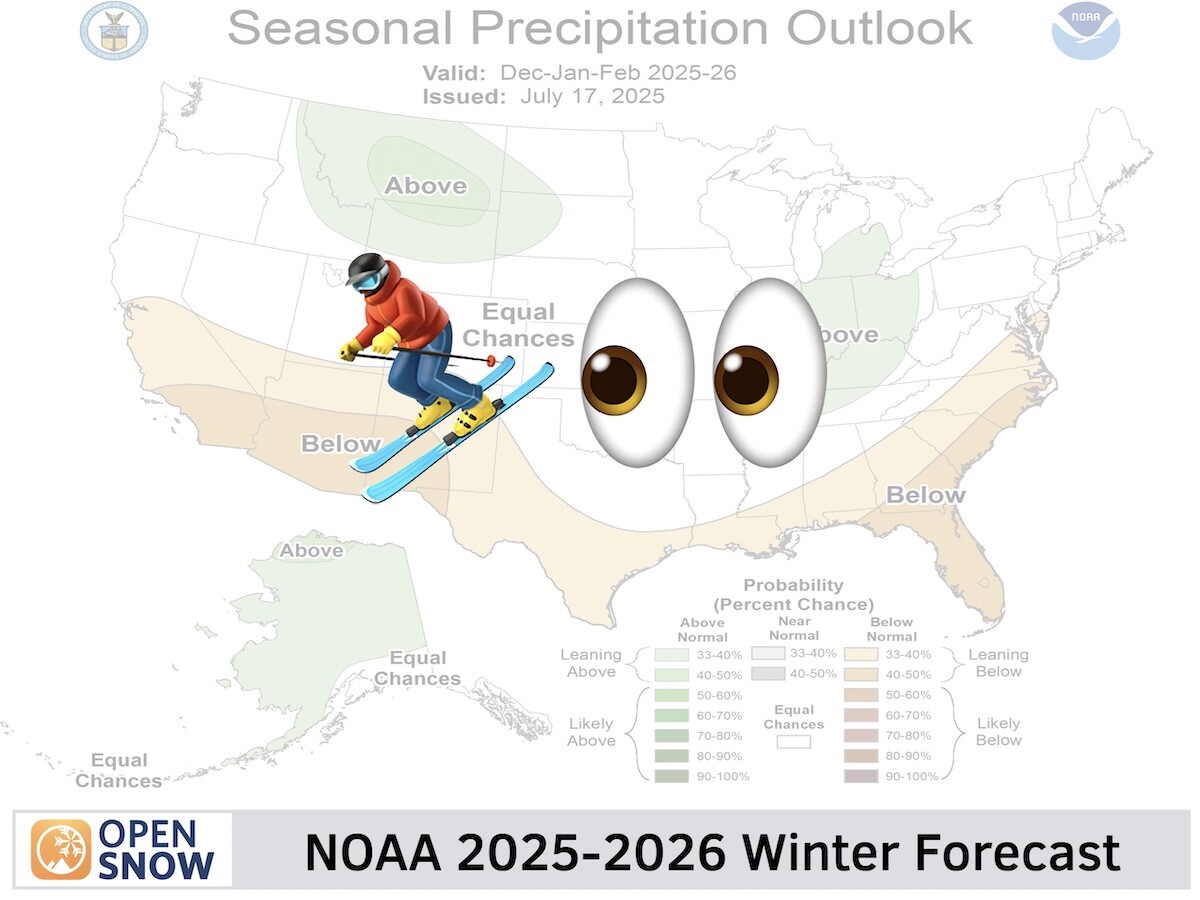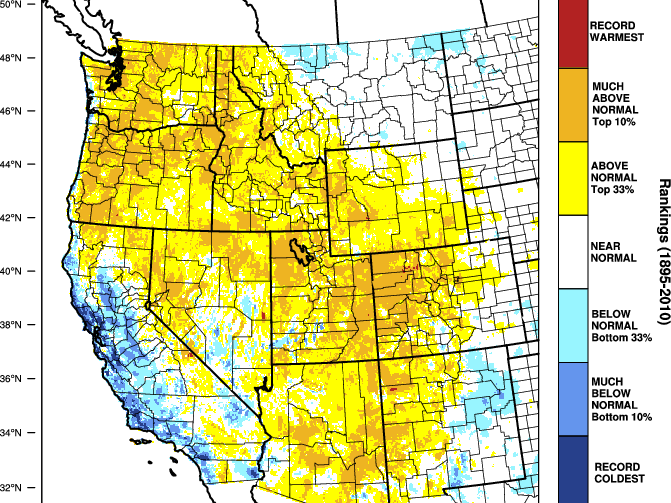News

By Zach Butler, Meteorologist Updated 1 year ago November 30, 2023
Mid-Atlantic Regional Definitions
The Mid-Atlantic region is a diverse geographic area containing 62 ski resorts. Resorts range from those seeing the most snow in upstate New York to regional favorites in southern Virginia, West Virginia, and North Carolina that can see large Nor’easters. Every resort in the Mid-Atlantic presents unique opportunities to skiers and riders, with vastly different weather conditions from North Carolina to New York.
The Mid-Atlantic region is often dismissed for its lack of snow and small terrain compared to the West and New England but there are hidden gems and powder pockets to be found. The accessibility to a wide variety of terrain and weather conditions from small towns to big cities make the Mid-Atlantic a great place to follow the weather for the best ski and ride conditions. If it is raining near you along the coast, head a couple more hours inland for some freshies!
In my Daily Snows, I group resorts by sub-region: Northern, Western, Eastern, Central, and Southern. This means that each sub-region will see different weather and snow amounts creating a unique ski and ride experience at each resort. In this article, I will go over the definitions of each sub-region, a general overview of the weather pattern, and which resorts are in them. Find the region that you ski and ride in below!


The Northern Mid-Atlantic
The northern Mid-Atlantic consists of resorts in northwestern Pennsylvania (PA) and most resorts in New York (NY). Resorts north of the Catskills are in the northern Mid-Atlantic. The northern Mid-Atlantic is dominated by lake effect snow and sees the coldest temperatures in the region, often allowing these resorts to open first and close last. The northern Mid-Atlantic can be subdivided into the northwestern region (NW) and the northeastern region (NE). The NW Mid-Atlantic consists of NW PA and western NY. The big resorts in the Catskills are in the NE. All of the following resorts are in the northern Mid-Atlantic with the NW and NE highlighted below.
NY: Belleayre (NE), Brantling, Bristol Mountain, Buffalo Ski Club(NW), Greek Peak, HoliMont(NW), Holiday Valley(NW), Hunter Mountain(NE), Kissing Bridge(NW), Labrador, Peek'n Peak(NW), Plattekill(NE), Song Mountain, Swain Resort, and Windham(NE)
PA: Mount Pleasant(NW)
The northern Mid-Atlantic is one of my favorite areas to ski. A big lake effect event around the Finger Lakes can rival west coast powder and the low-key vibes make it great for family and friends day or night. The Catskills are the biggest terrain that the region has, and is less than a couple hours from New York City.
The Western Mid-Atlantic
The western Mid-Atlantic consists of resorts on the far edge of the region in western NY, PA, Maryland (MD), and West Virginia (WV). Yes, some sub-regions of the Mid-Atlantic can overlap that we see in northwestern (NW) NY and PA. The western Mid-Atlantic is dominated by lake effect and upslope snow showers, rivaling the northern Mid-Atlantic for the highest snow totals in the region. All of the following resorts are in the western Mid-Atlantic with the NW highlighted in the list below.
MD: Wisp
NY: Buffalo Ski Club(NW), HoliMont(NW), Holiday Valley(NW), Kissing Bridge(NW), and Peek'n Peak(NW)
PA: Blue Knob, Boyce Park, Hidden Valley, Laurel Mountain, Mount Pleasant(NW), Nemacolin, and Seven Springs
WV: Canaan Valley, Timberline, Snowshoe, and Whitegrass
While further away from the bigger cities, the western Mid-Atlantic has diverse terrain with cold temperatures and great snow. If the precipitation is mixing on the I-95 corridor, head another hour inland to the western Mid-Atlantic for powder.
The northern and western Mid-Atlantic can rival resorts throughout the country in snow amounts due to lake effect snow and large Nor’Easters. These areas have diverse terrain and can be awesome on powder days. They are only a few hours away from the big East Coast cities, making them easily accessible for a long weekend. As you get closer to the I-95 corridor, the resorts in the Catskills of New York are the highest terrain in the region and can get big snow totals from Nor’Easters.
The Eastern Mid-Atlantic
The eastern Mid-Atlantic consists of resorts in eastern PA, New Jersey (NJ), and southern NY including the Catskills. This part of the Mid-Atlantic experiences the most changes in weather systems from coastal storms, to weak storms, snow squalls, and even the occasional lake effect snow band. The eastern Mid-Atlantic is the most accessible to many of the big East Coast cities and can be one of the more popular parts of the region. All of the following resorts are in the eastern Mid-Atlantic with the northeastern (NE) highlighted in the list below.
NJ: Campgaw, Mountain Creek
NY: Belleayre (NE), Holiday Mountain Fun Park, Hunter Mountain(NE), Mount Peter, Plattekill(NE), and Windham(NE)
PA: Bear Creek, Big Bear, Big Boulder, Blue Mountain, Camelback, Elk Mountain, Jack Frost, Montage Mountain, Shawnee, and Spring Mountain
There are a lot of resorts in the eastern Mid-Atlantic, which make it flexible to find your favorite turns, lodge, or the closest to your house. The family-friendly areas and diverse terrain make the eastern Mid-Atlantic a great place to enjoy a vacation or take some mid-week days off.
The Central Mid-Atlantic
The central Mid-Atlantic consists of resorts in central PA. Winter weather is very similar to the eastern Mid-Atlantic with coastal storms, weak storms, snow squalls, and lake effect snow. More snow falls in the central Mid-Atlantic than in the east because it is further inland, which makes it colder. If it is raining or mixing on the coast, drive further inland to the central Mid-Atlantic. All of the following resorts are in the central Mid-Atlantic.
PA: Liberty Mountain, Roundtop, Sawmill, Tussey Mountain, and Whitetail
The central Mid-Atlantic is where I grew up skiing. It has small terrain and small crowds, which make it a great area to learn or have a mountain to yourself or your buddies. The central Mid-Atlantic is only another hour's drive past the eastern resorts, making it an awesome alternative for different weather conditions or holiday weekends.
The Southern Mid-Atlantic
The southern Mid-Atlantic consists of all resorts in VA and one in WV. Winter weather is dominated by weak storms that move in from the west and hopeful coastal storms that can produce heavy snow. Despite seeing the least amount of snow in the region, the southern Mid-Atlantic has diverse and beautiful terrain. On a good day, the southern Mid-Atlantic has smooth riding and chill vibes, as well as easy accessibility. All of the following resorts are in the southern Mid-Atlantic.
VA: Bryce Resort, Homestead, Massanutten, and Wintergreen
WV: Winterplace
The Smokies
Last but not least, the Smokies are resorts in North Carolina and Tennessee. Home to the tallest mountains on the East Coast, the Smokies can receive big snowfalls from coastal storms and upslope snow showers if winds are from the northwest. Resorts here rely on snowmaking heavily, but the terrain and views no matter the snow quality make shredding fun. All of the following resorts are in the Smokies.
NC: Appalachian Ski Mountain, Beech Mountain Resort, Cataloochee Ski Area, Sapphire Valley, Sugar Mountain, and Wolf Ridge
TN: Ober Gatlinburg
The Mid-Atlantic region is where I grew up skiing and learned to study meteorology. The weather and terrain are diverse, which allows for all abilities to find their favorite trail and snow conditions within a couple of hour's drive. The sub-region breakdown above allows me to communicate where the best skiing and riding is for you, as well as local tidbits for each sub-region's personality and common weather conditions.
Happy skiing and riding!
Zach Butler
About The Author




